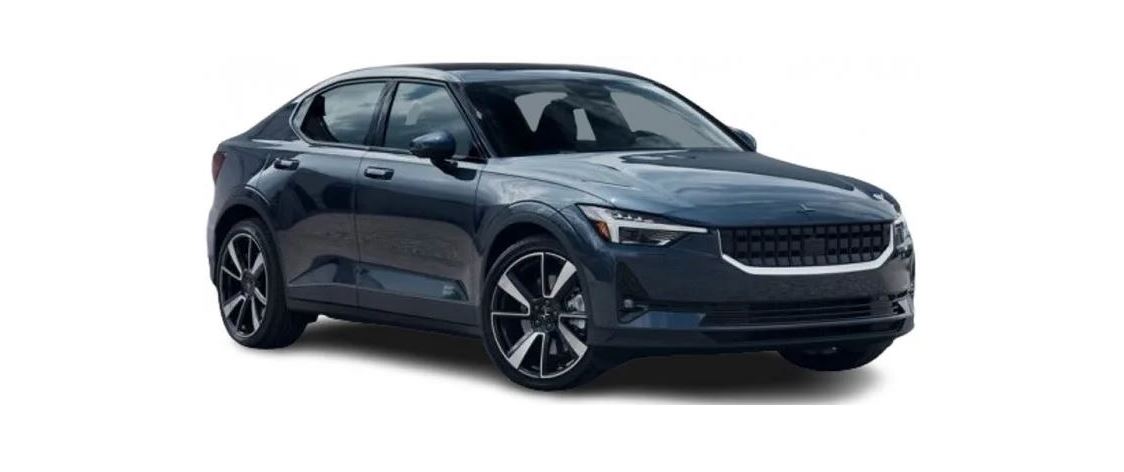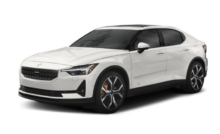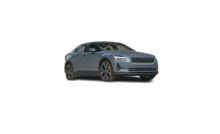If the speed difference between your vehicle and the obstacle is greater than the speeds given below, the auto-brake function cannot prevent a collision but can reduce its consequences.
Vehicles
Braking assistance can help prevent a collision with a vehicle ahead by reducing your vehicle’s speed by up to 60 km/h (37 mph).
Cyclists
Braking assistance can help prevent a collision with a cyclist by reducing your vehicle’s speed by up to 50 km/h (30 mph).
Pedestrians
Braking assistance can help prevent a collision with a pedestrian by reducing your vehicle’s speed by up to 45 km/h (28 mph).
Large animals
If there is a risk of colliding with a large animal, braking assistance can help reduce your vehicle’s speed by up to 15 km/h (9 mph).
The braking function for large animals is primarily intended to mitigate the force of a collision at higher speeds. Braking is most effective at speeds above 70 km/h (43 mph) and less effective at lower speeds.
Assistance during collision risks in crossing traffic
- Sector in which the function can detect an oncoming vehicle in crossing traffic.
In order for the function to detect an oncoming vehicle in situations where there is a risk of a collision, that vehicle must be within the sector in which the function can analyze the situation.
The following conditions must also be met:
- your vehicle’s speed must be at least 4 km/h (3 mph).
- your vehicle must be making a left turn.
- The oncoming vehicle’s headlights must be on.
The function may be unable to assist the driver if, for example:
- the road is slippery and Electronic Stability Control (ESC) is intervening.
- the oncoming vehicle is detected at a late stage.
- the oncoming vehicle is partially obstructed by another vehicle or object.
- the oncoming vehicle’s headlights are off.
- the oncoming vehicle is moving erratically and e.g. suddenly changes lanes at a late stage.
The function uses the vehicle’s camera and/or radar units, which have certain general limitations.
Assistance during collision risks in oncoming traffic
Oncoming vehicles in your own lane
If an oncoming vehicle veers into your lane and a collision is unavoidable, the function can help reduce your vehicle’s speed to attempt to mitigate the force of the collision.
- Own vehicle
- Oncoming vehicles
The following criteria must be met for the function to work:
- your vehicle’s speed must be above 4 km/h (3 mph)
- the road must be straight
- your lane must have clear side lane markings
- your vehicle must be positioned straight in your lane
- the oncoming vehicle must be positioned within your vehicle’s lane markings
- the oncoming vehicle’s headlights must be on
- the function can only handle “front-to-front” collisions
- the function can only detect vehicles with four wheels.
When the vehicle veers into oncoming traffic
This function can help a distracted driver who has not noticed that the vehicle is about to veer into a traffic lane moving in the opposite direction.
The function provides assistance by swerving your vehicle back into your own lane.
- Oncoming vehicles
- Own vehicle
The function is active at speeds between 60-140 km/h (37-87 mph) on roads with clearly visible traffic lane markings/lines.
If your vehicle is starting to veer from your own lane and a vehicle is approaching from the opposite direction, this function can help the driver steer the vehicle back into its own lane.
However, the function will not provide steering assistance if the turn signal is used. The function will also not be activated if it detects that the driver is actively operating the vehicle.
Warnings and brake interventions due to an imminent collision with an oncoming vehicle always come very late.
The function uses the vehicle’s camera and/or radar units, which have certain general limitations.
Assistance during collision risks limitations
Braking assistance limitations
Extra equipment
Hanging objects, such as a flag or streamer to signal an over-sized load, or extras such as auxiliary lights or front protective grids that extend beyond the height of the vehicle’s hood, may obstruct the camera or radar unit.
Slippery road conditions
The extended braking distance on slippery roads may reduce the function’s capacity to help avoid a collision. In these types of situations, the Anti-lock Braking System and Electronic Stability Control (ESC) are designed for optimal braking power with maintained stability.
Low speed
The function is not activated at very low speeds under 4 km/h (3 mph). The system will therefore not intervene in situations in which your vehicle is approaching another vehicle very slowly, such as when parking.
Active driver
The driver’s commands are always prioritized. In situations in which the driver is clearly steering and applying the accelerator pedal, the function will not intervene, even if a collision is unavoidable. An active and aware driving style may therefore delay collision warnings and intervention in order to minimize unnecessary warnings.
Steering assistance limitations
The function may have limited functionality in certain situations and not intervene, e.g.:
- for smaller vehicles such as motorcycles
- if more than half of your vehicle has moved into the adjacent lane
- on roads/lanes with indistinct or no side lane markings
- outside the speed range 60-140 km/h (37-87 mph)
- when speed-dependent power steering wheel resistance is working at reduced power – e.g. during cooling due to overheating.
Functionality may also be reduced in other situations, such as:
- road work
- winter driving conditions
- narrow roads
- poor road surfaces
- a very sporty driving style
- bad weather with reduced visibility.
In these demanding driving conditions, the function may not be able to properly assist the driver.
Important warnings
The driver support system only issues a warning for obstacles detected by its camera and radar units, which means that warnings may come after a delay or not at all.
- Never wait for a warning or assistance. Apply the brakes when necessary.
- Auto-braking can prevent a collision or reduce collision speed, but to ensure full brake performance the driver should always depress the brake pedal – even when the vehicle brakes automatically.
- The warning and steering assistance are only activated if there is a high risk of collision – you must therefore never wait for the collision warning or the function to intervene.
- The function does not activate automatic braking intervention during heavy acceleration.
- Warnings and brake interventions can be triggered late or not at all if the traffic situation or external influences prevent the camera and radar from properly detecting pedestrians, cyclists, large animals or vehicles ahead of the vehicle.
- To be able to detect vehicles at night, its front and rear lights must work and illuminate clearly.
- Warnings for stationary or slow-moving vehicles and large animals may be disabled due to darkness or poor visibility.
- Warnings and brake interventions for pedestrians and cyclists are disengaged at vehicle speeds over 80 km/h (50 mph).
- The system can provide effective warnings and brake intervention if the relative speed is lower than 50 km/h (30 mph).
- For stationary or slow-moving vehicles, warnings and brake interventions are effective at vehicle speeds of up to 70 km/h (43 mph).
- Speed reduction for large animals is less than 15 km/h (9 mph) and can be achieved at vehicle speeds over 70 km/h (43 mph). At lower speeds, the warning and brake intervention for large animals is less effective.
The function uses the vehicle’s camera and/or radar units, which have certain general limitations.
Only a workshop may perform maintenance on driver support components – contact Polestar Customer Support.
Assistance during collision risks with vehicles in your blind spot*
- Another vehicle in blind spot zone
- Own vehicle
Even if the driver intentionally changes lanes using a turn signal without noticing another vehicle approaching, the function can provide assistance.
The function is active at speeds between 60-140 km/h (37-87 mph) on roads with clearly visible traffic lane markings/lines.
The lights in the door mirrors will flash while steering assistance is being provided, whether or not BLIS* is activated. An audible signal will also be given.
Assistance during collision risks
- Function overview
- Collision warning audible signal
- Collision warning symbol
Normally, the occupants of the vehicle will not be aware of the function except when the system intervenes when a collision is imminent.
The function can help the driver avoid a collision when e.g. driving in stop-and-go traffic, when changes in the traffic ahead and driver distraction could lead to an incident. The function will then activate a brief, forceful braking in an attempt to stop your vehicle immediately behind the vehicle or object ahead.
The function is always activated and cannot be switched off. However, you can set a level of sensitivity for the system.
Sub-functions
Assistance during collision risks can, if necessary, provide the following:
- Collision warning
- Assisted braking
- Automatic braking
- Steering assistance
Step 1 – Collision warning
If there is a risk of a collision with a pedestrian, cyclist, large animal or another vehicle, the driver will be alerted with light, sound and pulsations in the brake pedal. At lower speeds, or if the driver rapidly brakes or accelerates, the brake pedal pulsations will not be provided because pulsation intensity varies with the vehicle’s speed.
Step 2 – Assisted braking
In assisted braking, braking is augmented if the system determines that the pressure the driver is exerting on the brake pedal is insufficient to prevent the collision.
Step 3 – Automatic braking
If the driver has not taken evasive action and a collision is imminent, the automatic braking function will be triggered. This occurs whether or not the driver is pressing the brake pedal. Full braking force will be applied to reduce the speed at impact or reduced braking effect will be applied if this is sufficient to avoid the collision.
The seat belt tensioner may be activated when the automatic braking function is triggered.
The function is designed to be activated as late as possible to help avoid unnecessary intervention. Automatic braking will only be applied after or during a collision warning.
If automatic braking has prevented a collision with a stationary object, the vehicle will be kept at a standstill until the driver takes action. If the vehicle has slowed to avoid colliding with a slower-moving vehicle ahead, your speed will be reduced to that vehicle’s speed.
Auto-braking can always be cancelled if the driver presses hard on the accelerator pedal.
When the function is activated and braking, the brake light will illuminate. A message will be displayed in the instrument panel saying that the function is or has been active.
The function may not be used to change how the driver operates the vehicle. The driver must not only rely on the function to brake the vehicle.
Steering assistance
The function can help the driver reduce the risk of the vehicle leaving its lane unintentionally or colliding with another vehicle or obstacle by actively steering the vehicle back into its lane or swerving. Steering assistance is not provided sequentially, but instead can occur regardless of when the other steps take place.
After the system has automatically intervened, this text message will appear in the instrument panel.
It is always the driver who must decide how much the vehicle should be in control – the vehicle can never take command.
- The function is supplementary driver support intended to facilitate driving and help make it safer – it cannot handle all situations in all traffic, weather and road conditions.
- The driver is advised to read all sections in the Manual about this function to learn of its limitations, which the driver must be aware of before using the function.
- Driver support functions are not a substitute for the driver’s attention and judgment. The driver is always responsible for ensuring the vehicle is driven in a safe manner, at the appropriate speed, with an appropriate distance to other vehicles, and in accordance with current traffic rules and regulations.
Assistance during risk of run-off
This function has two levels for intervention:
- Steering assistance only
- Steering assistance with braking
Braking intervention assists in situations where steering assistance alone is not sufficient. Braking force is automatically adapted according to the situation at the moment the vehicle begins to run off the road.
The function is active at speeds between 65-140 km/h (40-87 mph) on roads with clearly visible traffic lane markings/lines.
The vehicle’s camera unit monitors the edges of the road and the painted side marker lines. If the vehicle is about to cross the edge of the road, the function may attempt to steer the vehicle back onto the road. If this is not sufficient to keep the vehicle on the road, the brakes will also be applied.
However, the function will not provide either steering assistance or braking if a direction indicator is used. The function will also not be activated if it detects that the driver is actively operating the vehicle.
Detecting obstacles with assistance during collision risks
The function can detect pedestrians, cyclists or vehicles that are stationary or ahead and moving in the same direction as your vehicle. The function can also detect pedestrians, cyclists or large animals crossing the road in front of your vehicle.
Warnings and braking assistance may come later than usual or not at all. The driver is always responsible for ensuring that the vehicle is driven correctly and with a safety distance suitable for the speed.
Vehicles
For the function to be able to detect a vehicle in the dark, its headlights and taillights must be on and clearly visible.
Cyclists
Examples of what the function would interpret to be a cyclist: clear body and bicycle shapes.
For good performance, the system’s camera and radar units for cyclist detection need the clearest possible information about the contours of the bicycle and of the cyclist’s head, arms, shoulders, legs, torso and lower body in combination with normal human movements.
If large portions of the cyclist’s body or the bicycle itself are not visible to the function’s camera, it will not be able to detect a cyclist.
The system can only detect adult cyclists riding on bicycles intended for adults.
The function is supplementary driver support, but it cannot detect all cyclists in all situations and, for example, cannot see:
- partially obscured cyclists.
- cyclists if there is poor contrast to the cyclist’s background.
- cyclists in clothing that hides their body contour.
- bikes loaded with large objects.
Pedestrians
Examples of what the function considers to be a pedestrian: clear body contours.
For good performance, the system’s camera and radar units for pedestrian detection need the clearest possible information about the contours of the pedestrian’s head, arms, shoulders, legs, torso and lower body in combination with normal human movements.
In order to detect a pedestrian, there must be a contrast to the background, which could depend on clothing, weather conditions, etc. If there is little contrast, the person may be detected late or not at all, which may result in a delayed reaction from the system or no reaction at all.
The function can detect pedestrians even in dark conditions if they are illuminated by the vehicle’s headlights.
The function is supplementary driver support, but it cannot detect all pedestrians in all situations and, for example, cannot see:
- partially obscured pedestrians, people in clothing that hides their body contour or pedestrians shorter than 80 cm (32 tum).
- pedestrians if there is poor contrast to the pedestrian’s background.
- pedestrians who are carrying large objects.
Large animals
Examples of what the function would interpret as a large animal: stationary or moving slowly and with clear body contours.
For good performance, the system’s function for detecting large animals (e.g. moose, horses, etc.) needs the clearest possible information about body contours. This entails being able to detect the animal straight from the side in combination with normal movements for that animal.
If parts of the animal’s body are not visible to the function’s camera, the system will not be able to detect the animal.
The function can detect large animals even in dark conditions if they are illuminated by the vehicle’s headlights.
The function is supplementary driver support, but it cannot detect all large animals in all situations and, for example, cannot see:
- partially obscured larger animals.
- larger animals seen from the front or from behind.
- running or fast moving larger animals.
- large animals if there is poor contrast to the animal’s background.
- smaller animals such as cats and dogs.
Warnings and braking assistance may come later than usual or not at all. The driver is always responsible for ensuring that the vehicle is driven correctly and with a safety distance suitable for the speed.
Select sensitivity for assistance during collision risks
To change this setting:
- Tap
- Tap Assist.
- Tap
If the driver feels that the warnings are given too frequently, the sensitivity can be reduced. This will reduce the number of warnings but will also result in the function providing warnings at a later stage. The latest warning setting should therefore only be used in exceptional cases, such as when a more dynamic driving style is preferred.
- No automatic system can guarantee 100% correct function in all situations. You should therefore never test use of the function in the direction of people or vehicles – this could lead to severe damage, serious personal injury or even death.
- The function warns the driver if there is a risk of collision, but the function cannot reduce the driver’s reaction time.
- Even if the setting for early warning is selected, warnings may be perceived as late in certain situations – e.g. when there are large speed differences or if the vehicle ahead suddenly brakes heavily.
- When the setting for early warning is selected, the warnings will come further in advance. This may cause the warnings to come more frequently than with a different setting, but is recommended since it can make the function more effective.
Symbols and messages for assistance during collision risks
| Symbol | Message | Meaning |
|---|---|---|
| | Automatic intervention Collision Avoidance
| When the function is activated, a message will appear to alert the driver. |
| | Collision Avoidance system unavailable | The system is temporarily malfunctioning or functioning but with reduced performance. |
| | Collision Avoidance Reduced functionality Service required | The system is not functioning as intended. Contact a workshop. |
| | Windscreen sensor blocked See Manual | The camera’s ability to detect the lane in front of the vehicle is reduced. |
A text message can be erased by briefly pressing the
If a message cannot be erased, contact Polestar Customer Support.




